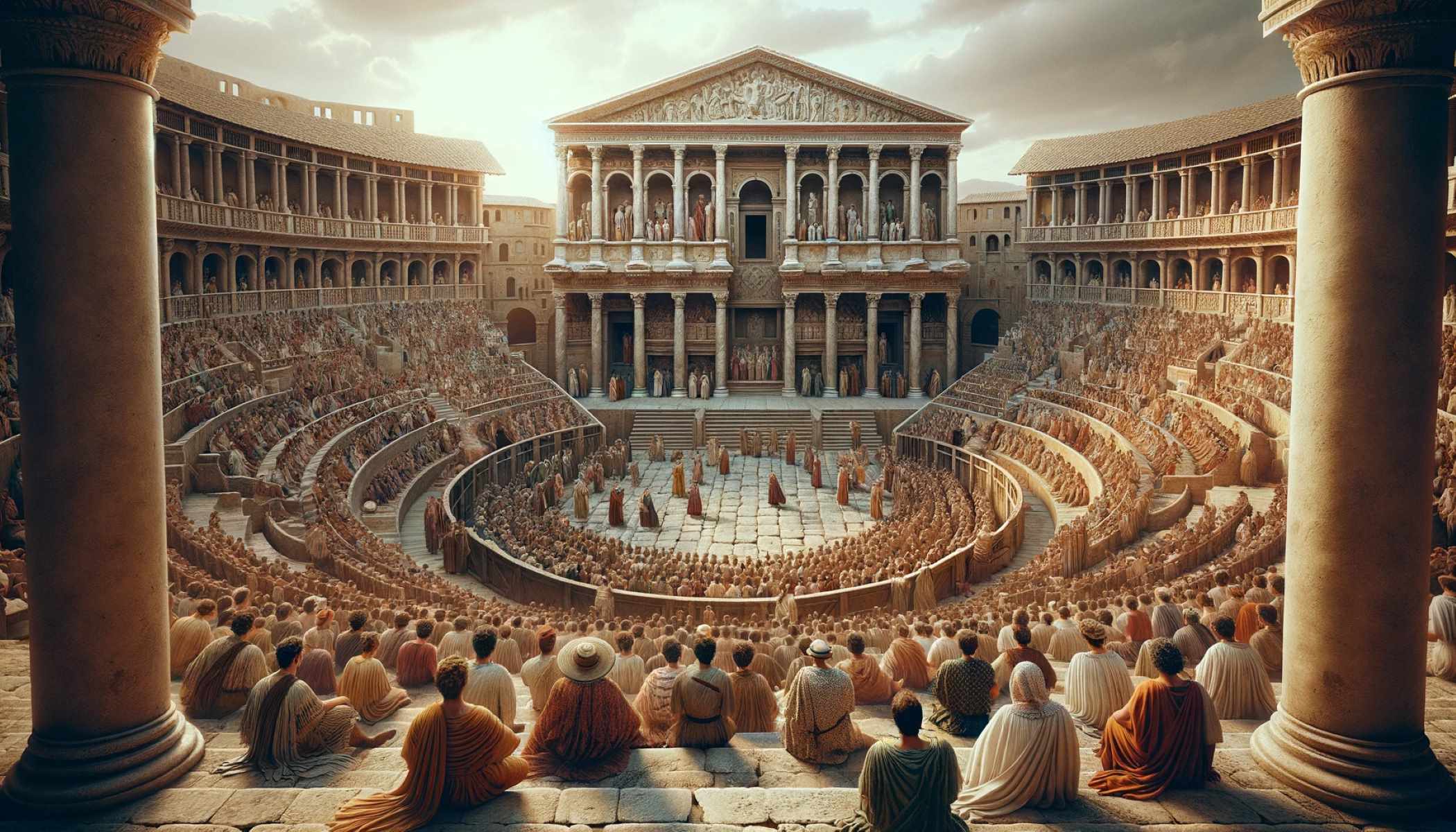Secrets Of The Roman Theatre In Amman, Jordan

Have you ever wondered what ancient Roman entertainment looked like? The Roman Theatre in Amman, Jordan offers a glimpse into the past. Built in the 2nd century AD, this massive structure could hold up to 6,000 spectators. Imagine the roar of the crowd as gladiators fought or actors performed. Today, visitors can walk through the same stone steps and seats that ancient Romans once used. The theatre remains a popular spot for cultural events and concerts, blending history with modern life. If you're planning a trip to Jordan, this historic site should be on your must-see list.
Discovering the Roman Theatre in Amman
The Roman Theatre in Amman, Jordan, stands as a testament to the grandeur of ancient Roman architecture. Built during the reign of Emperor Antoninus Pius, this magnificent structure has witnessed centuries of history. Let's explore some fascinating aspects of this iconic landmark.
The Architectural Marvel
The Roman Theatre's design showcases the brilliance of Roman engineering. Its semi-circular shape and tiered seating allowed for excellent acoustics, ensuring that even the faintest whisper could be heard by all.
The Cavea: The seating area, known as the cavea, could accommodate up to 6,000 spectators. Divided into three horizontal sections, it provided a clear view of the stage from every seat.
The Orchestra: This semi-circular space in front of the stage was used by the chorus and for special performances. It also served as a buffer zone between the audience and the actors.
The Scaenae Frons: The stage backdrop, or scaenae frons, was elaborately decorated with columns, niches, and statues. It created a visually stunning background for performances.
Historical Significance
The Roman Theatre isn't just an architectural wonder; it's also a historical treasure trove. Each stone and column tells a story of the past.
Cultural Hub: In ancient times, the theatre was a cultural hub where plays, poetry readings, and musical performances took place. It was a center of entertainment and social interaction.
Roman Influence: The theatre reflects the influence of Roman culture in Amman. It stands as a reminder of the city's historical connection to the Roman Empire.
Restoration Efforts: Over the years, significant restoration efforts have been made to preserve the theatre. These efforts ensure that future generations can continue to appreciate its beauty and historical importance.
Modern-Day Attractions
Today, the Roman Theatre remains a popular tourist destination. Visitors can explore its ancient corridors and imagine the grandeur of past performances.
Amman Citadel: Located nearby, the Amman Citadel offers panoramic views of the city and additional historical insights. It's a must-visit for history enthusiasts.
Jordan Museum: Just a short distance away, the Jordan Museum houses artifacts that provide context to the theatre's history. It's a great place to deepen your understanding of the region's past.
Cultural Events: The theatre still hosts cultural events and performances, bringing ancient traditions to life in a modern setting. Attending an event here is a unique experience.
Practical Tips for Visitors
Planning a visit to the Roman Theatre? Here are some practical tips to make the most of your trip.
Best Time to Visit: Early morning or late afternoon visits are ideal to avoid the midday heat and crowds. The lighting during these times also enhances the theatre's beauty.
Guided Tours: Consider joining a guided tour to gain deeper insights into the theatre's history and architecture. Knowledgeable guides can provide fascinating anecdotes and details.
Comfortable Footwear: Wear comfortable shoes as you'll be walking on uneven surfaces and climbing steps. It's important to stay comfortable while exploring.
Photography: Don't forget your camera! The theatre offers countless photo opportunities, from the grand stage to the intricate details of the scaenae frons.
Local Cuisine: After your visit, enjoy some local cuisine at nearby restaurants. Jordanian dishes like mansaf and falafel are a delicious way to end your day.
The Roman Theatre in Amman, Jordan, is a captivating blend of history, architecture, and culture. Whether you're a history buff, an architecture enthusiast, or simply a curious traveler, this ancient marvel promises an unforgettable experience.
Why Visit the Roman Theatre in Amman
The Roman Theatre in Amman stands as a testament to ancient Roman architecture and culture. This historical site, built in the 2nd century AD, offers a glimpse into the past with its well-preserved structure and fascinating history. Walking through the theatre, you can almost hear the echoes of ancient performances and feel the energy of the crowds that once gathered there.
Exploring the theatre is not just about admiring its grandeur. It’s about understanding the rich history of Amman and the Roman influence on the region. The theatre also hosts cultural events and performances, making it a living part of the city’s heritage.
Visiting the Roman Theatre in Amman is a must for history buffs, architecture enthusiasts, and anyone looking to connect with the past. It’s a place where history comes alive, offering a unique experience you won’t forget.

